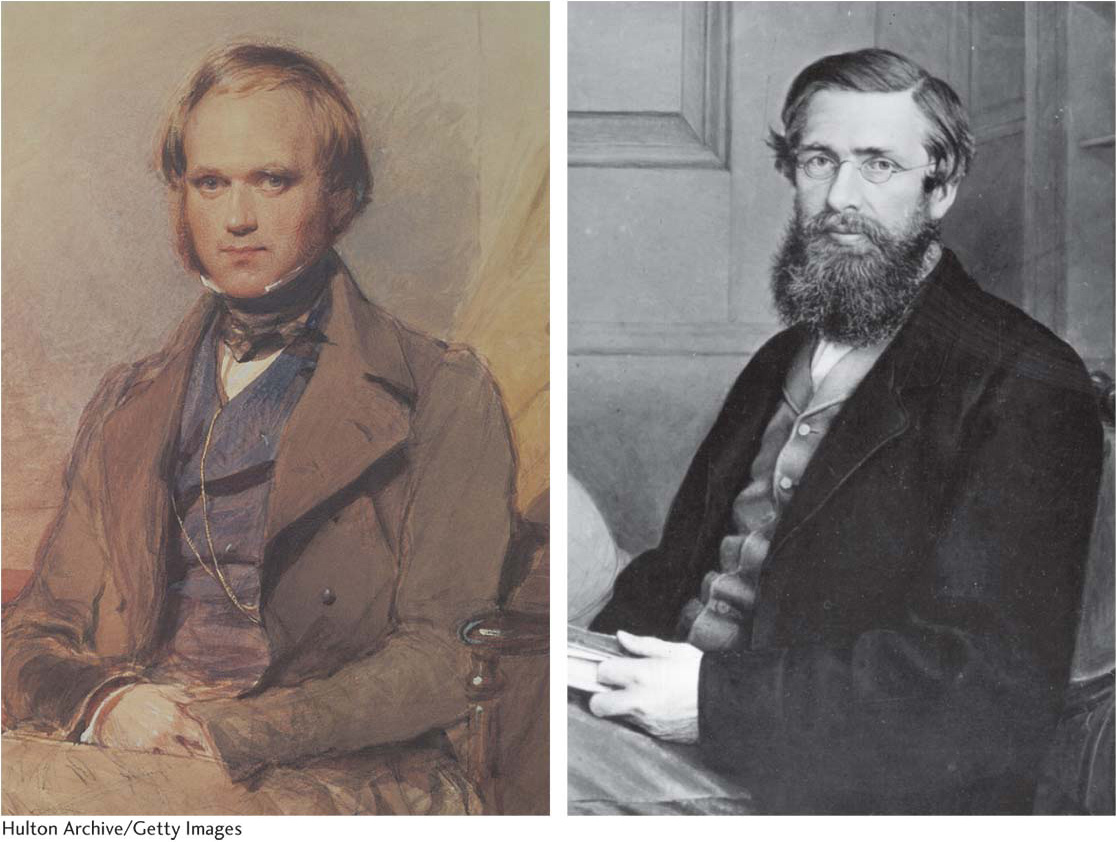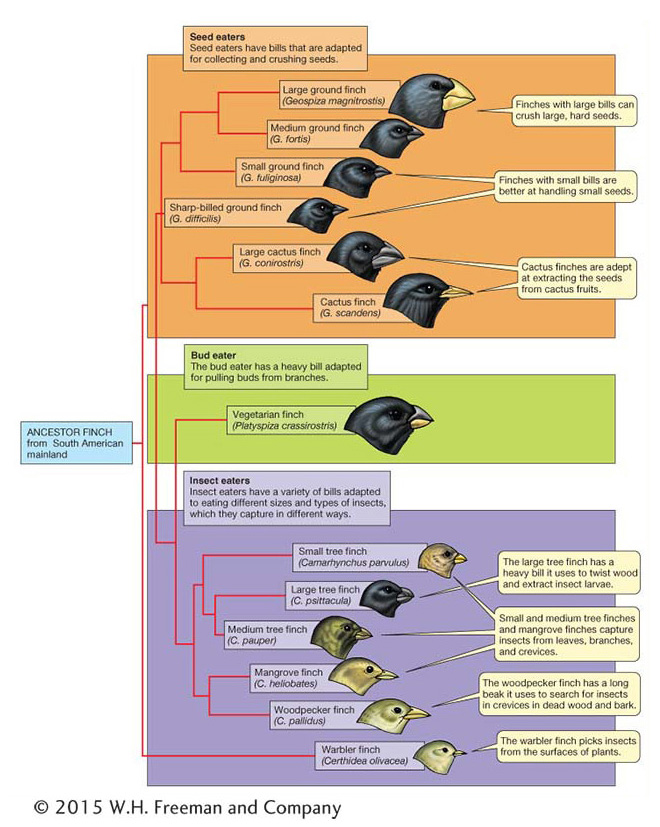Chapter Introduction
Evolution of Genes
and Traits
CHAPTER
20
LEARNING OUTCOMES
After completing this chapter, you will be able to
Identify and explain the essential ingredients of evolution by natural selection.
Describe examples of traits and genes that have evolved by natural selection.
Contrast neutral molecular evolution with adaptive processes.
Distinguish the signatures of positive selection and purifying selection in DNA and protein sequences.
Contrast experimental and statistical analyses of cumulative selection in proteins.
Formulate a rationale for the critical role of regulatory sequences in the evolution of morphological traits.
Assess the role of gene duplication in the origin of new protein functions.

Charles Darwin (1809–
Several months after leaving the islands, on the last leg of the voyage home to England, Darwin had his first flash of insight. He had begun to organize his copious field notes from his nearly five years of exploration and collecting. His plan was for experts back in England to lead the study of his collections of fossils, plants, animals, and rocks. Turning to his observations on the birds of the Galápagos, he recalled that he had found slightly different forms of mockingbirds on three different islands. Now, there was a puzzle. The prevailing view of the origin of species in 1835, held by most of Darwin’s teachers and much of the scientific establishment, was that species were specially created by God in their present form, unchangeable, and placed in the habitat to which they were best suited. Why, then, would there be slightly different birds on such similar islands? Darwin jotted in his ornithology notebook:
When I see these Islands in sight of each other and possessed of but a scanty stock of animals, tenanted by these birds but slightly differing in structure filling the same place in Nature, I must suspect they are only varieties. …If there is the slightest foundation for these remarks, the zoology of Archipelagoes will be well worth examining; for such facts would undermine the stability of species [emphasis added].2
Darwin’s insight was that species might change. This was not what he had learned at Cambridge University. This was heresy. Although Darwin decided to keep such dangerous thoughts to himself, he was gripped by the idea. After arriving home in England, he filled a series of notebooks with thoughts about species changing. Within a year he had convinced himself that species arise naturally from preexisting species, as naturally as children are born from parents and parents from grandparents. He then pondered how species change and adapt to their particular circumstances. In 1838, just two years after the conclusion of his voyage and before he had yet turned 30, he conceived his answer—
Darwin knew that to convince others of these two ideas—
He received crucial information from experts who helped to sort out and characterize his collections. Ornithologist John Gould pointed out to Darwin that what the young naturalist thought were blackbirds, grosbeaks, and finches from the Galápagos were actually 12 (now recognized as 13) new and distinct species of ground finches (Figure 20-1). The Galápagos species, though clearly finches, exhibit an immense variation in feeding behavior and in the bill shape that corresponds to their food sources. For example, the vegetarian tree finch uses its heavy bill to eat fruits and leaves, the insectivorous finch has a bill with a biting tip for eating large insects, and, most remarkable of all, the woodpecker finch grasps a twig in its bill and uses it to obtain insect prey by probing holes in trees.

This diversity of species, Darwin deduced, must have arisen from an original population of finch that arrived in the Galápagos from the mainland of South America and populated the islands. The descendants of the original colonizers spread to the different islands and formed local populations that diverged from one another and eventually formed different species.
The finches illustrate the process of adaptation, in which the characteristics of a species become modified to suit the environments in which they live. Darwin provided one level of explanation for the process, natural selection, but he could not explain how traits varied or how they changed with time because he did not understand the mechanisms of inheritance. Understanding the genetic basis of adaptation has been one of the long-
A first step toward this goal was taken when Mendel’s work pointing to the existence of genes was rediscovered two decades after Darwin died. Another key emerged a half century later, when the molecular basis of inheritance and the genetic code were deciphered. For many decades since, biologists have known that species and traits evolve through changes in DNA sequence. However, the elucidation of specific changes in DNA sequence underlying physiological or morphological evolution has posed considerable technical challenges. Advances in molecular genetics, developmental genetics, and comparative genomics are now revealing the diverse mechanisms underlying the evolution of genes, traits, and organismal diversity.
The study of evolution is a very large and expanding discipline. As such, we will not attempt a comprehensive overview of all facets of evolutionary analysis. Rather, in this chapter, we will examine the molecular genetic mechanisms underlying the variation in and evolution of traits and the adaptation of organisms to their environments. We will first examine the evolutionary process in general and then focus on specific examples for which the genetic and molecular bases of the phenotypic differences between populations or species have been pinpointed. All of the examples will focus on the evolution of relatively simple traits controlled by a single gene. These relatively simple examples are sufficient to illustrate the fundamental process of evolution at the DNA level and the variety of ways in which the evolution of genes affects the gain, loss, and modification of traits.